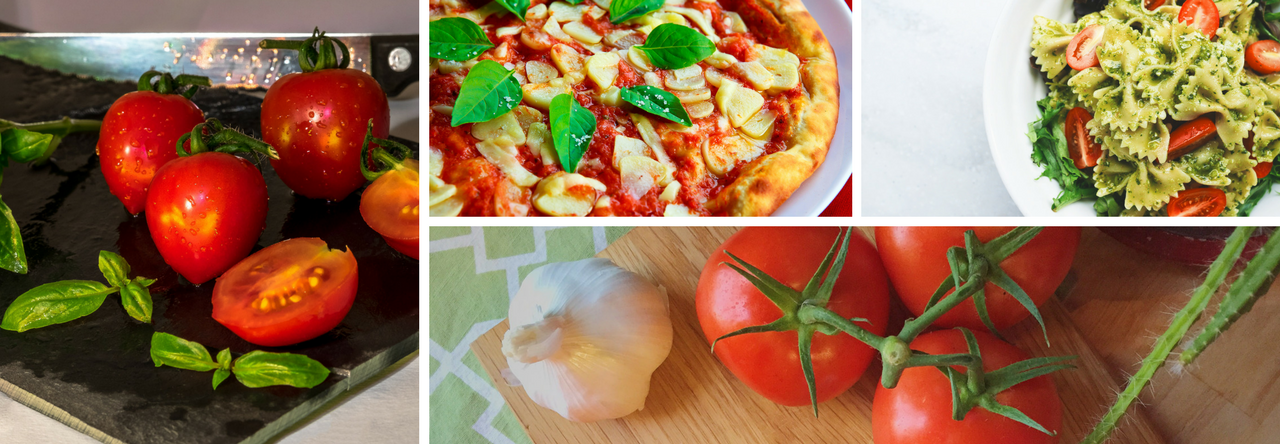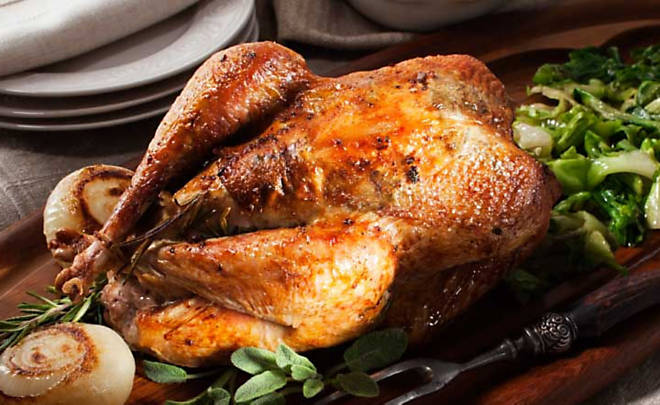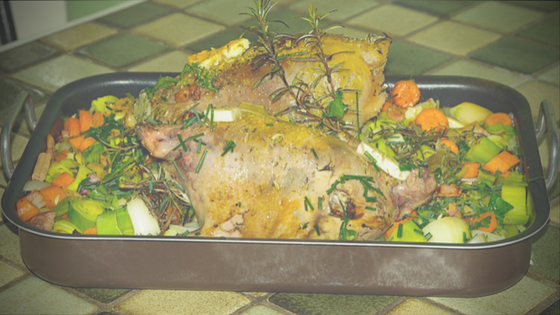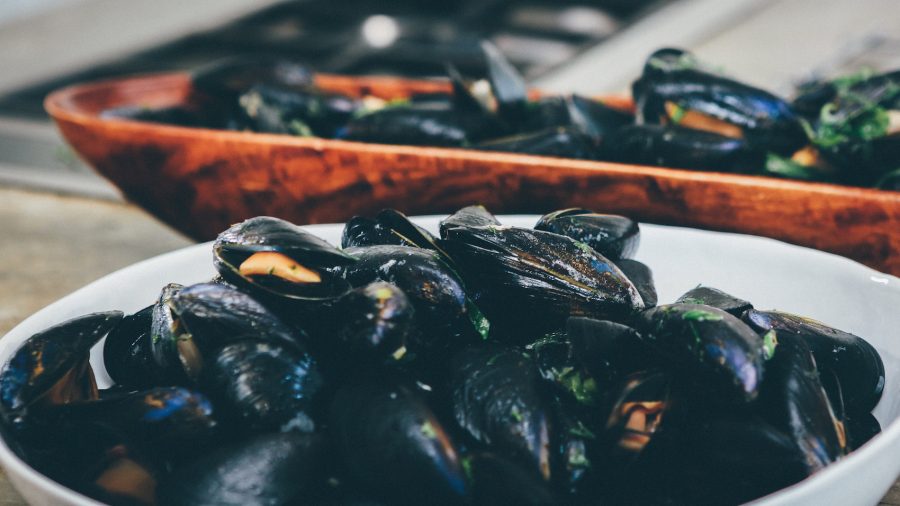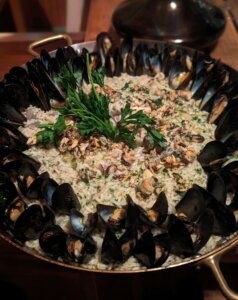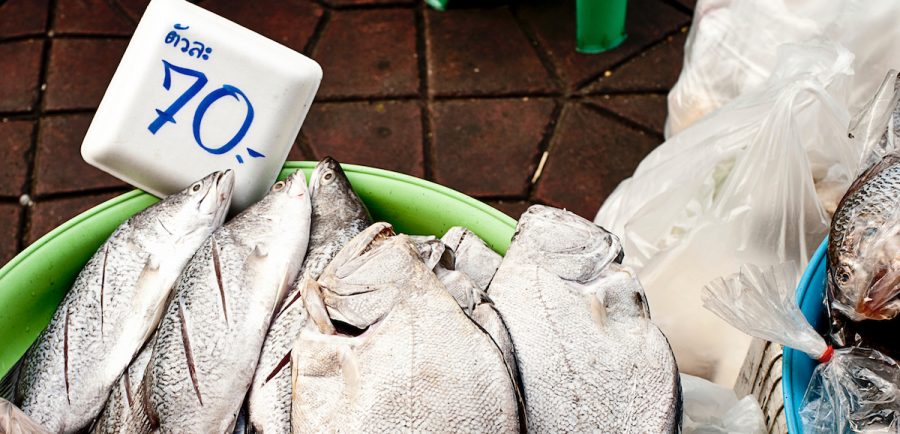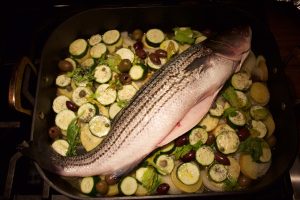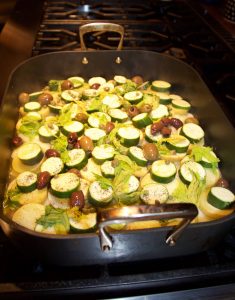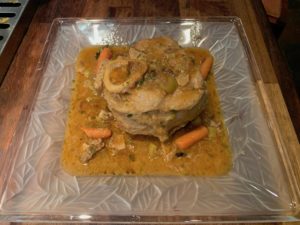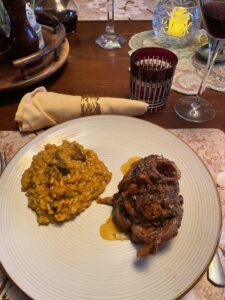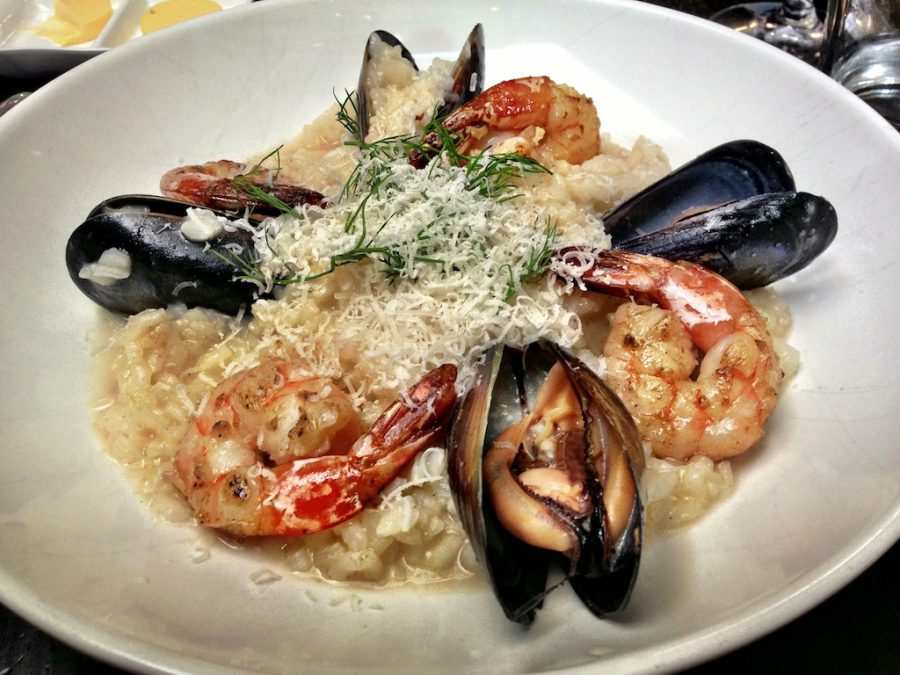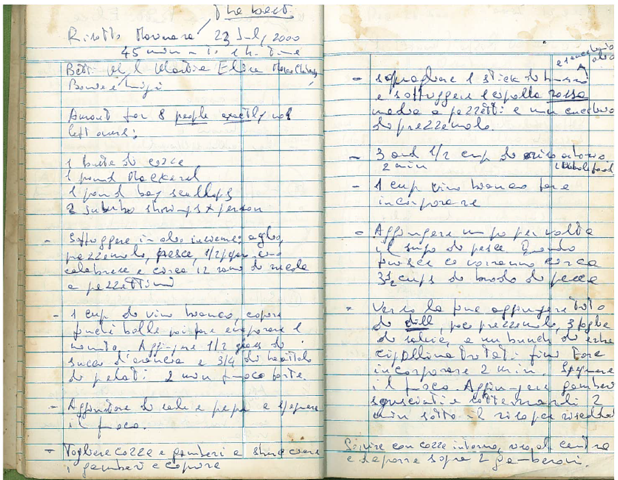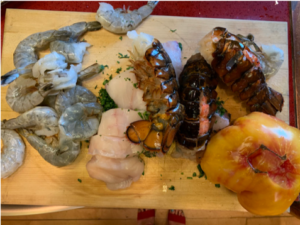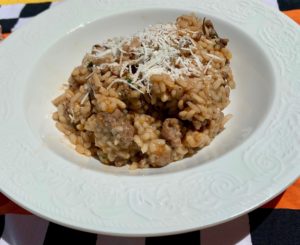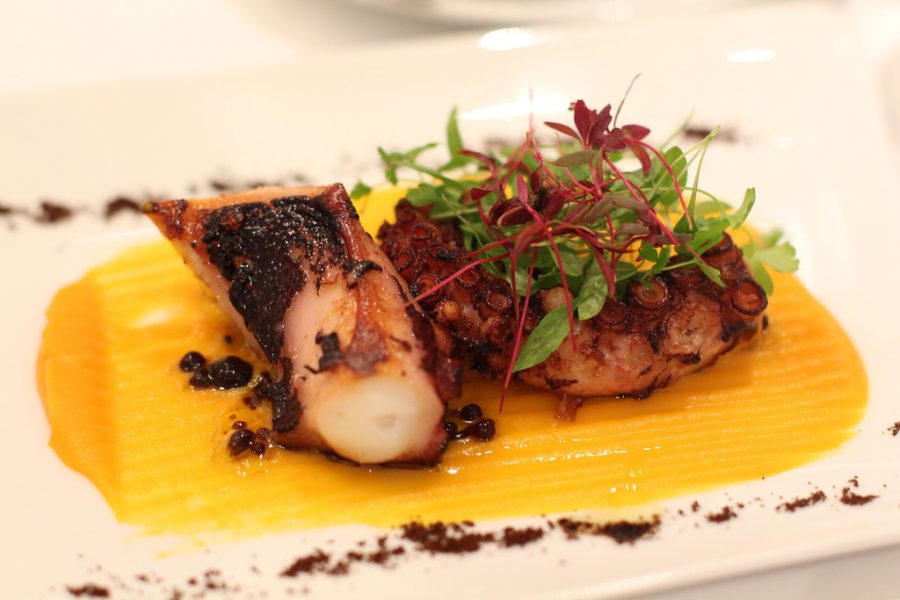This is a very old recipe that you can find in the famous cookbook by Artusi, the great grandfather of what is now known as the Italian Cuisine. He apparently loved this dish—like me and all my friends and guests—but you will seldom find it in any Italian restaurant, either in Italy or in the US. It is the type of food that your mom cooks at home. Anyway, apparently this dish originated in Florence in the 1400s.
Here is the original recipe: Try it and tell me what you think.

This is similar to the meatloaf that is made in the US, but it has some variations in its preparation.
Ingredients
- ½ cup extra-virgin olive oil
- 1 pound or 500 grams of lean ground meat—buffalo meat is perfect
- 2 eggs: 1 whole egg, and only the yolk of the other, which will be mixed with the ground meat
- 2 egg yolks, beaten – used to create a gravy from the drippings
- Juice of 1 lemon
- 2 tablespoons grated parmigiano cheese
- 1 teaspoon nutmeg
- 2 tablespoons plain bread crumbs
- 1 cup chicken broth
- A handful of flour (for dusting the cutting board where you shape the polpettone)
- salt and pepper to taste
Preparation
Preparation
- Wash your hands.
- Make a “volcano” out of the ground beef on a cutting board that has been dusted with all-purpose white flour. There should be a hole in the middle of the beef.
- Add to the center of the volcano: 2 eggs: 1 whole, 1 yolk only; 2 TB of grated Parmigiano; 2 table spoons of “plain” bread crumbs, TB. nutmeg, salt, and pepper. Using your hands, mix them up with the surrounding meat trying not to let the egg leak on the floor –that is why you made a volcano! With your hands mix everything well and make a big oval meatball log, i.e., the “polpettone.”
- Roll the polpettone in the flour. Carefully lift the polpettone log into the pan where the ½ cup of olive oil is already hot, but not smoking!
- Brown the polpettone on medium-high fire for about 10 minutes turning it around gently so all sides take a nice brown color.
- Add 1 cup of chicken broth, cover and lower the heat to medium-low (or low depending of the stove) and let it cook 20 minutes.
- Remove from the heat and IMMEDIATELY add the 2 well-beaten egg yolks, and turn the polpettone around the egg yok. As this starts to coagulate, add the juice of 1 squeezed lemon, turn the polpettone a little more. It will form a nice granulated sauce.
- Put the polpettone on the cutting board, slice it, put slices on serving dish, pour some of the gravy over it, and enjoy.
Wine Pairing Suggestions
A good Chianti, of course, or a Rosso di Montalcino for this dish that apparently originated in Florence.
Italiano: Il Polpettone
Il polpettone è una delle ricette più antiche della cucina Italiana. Era uno dei piatti preferiti dell’Artusi, il grande nonno della cucina Italiana, ma trovare questa ricotta in un ristorante è impossibile, chissà perché. Piace a tutti, adulti e bambini, e si fa molto facilmente. In 30 minuti da mangiare a 5 persone, o dieci se raddoppiate gli ingredienti.
Ingredienti
- 236 ml di olio extravergine di oliva
- 500 grammi di carne macinata magra: la carne di bufalo è perfetta
- 2 uova: 1 uovo intero, e solo il tuorlo dell’altro, che andrà mescolato alla carne macinata
- 2 tuorli d’uovo, sbattuti – usati per creare un sugo dalle sgocciolature
- Succo di 1 limone
- 2 cucchiai di parmigiano grattugiato
- 1 cucchiaino di noce moscata
- 2 cucchiai di pangrattato normale
- 236 ml di brodo di pollo
- Una manciata di farina (per spolverare il tagliere dove si forma il polpettone)
- Sale e pepe a piacere
Preparazione
- 500 grammi di carne magra tritata (di bufala se la trovate).
- Lavatevi le mani.
- Formare un vulcano, e mettere nello spazio vuoto al centro del vulcano 2 uova, uno intero, l’altro solo il rosso, 2 cucchiai di Parmigiano grattato e due di pan grattato, un cucchiaino da te di noce moscata, sale e pepe. Mischiate bene e fate una polpettona ovale. Poi passatela nella farina.
- Mettetela in una pentola con olio già caldo (circa 10 cucchiai d’olio o 120 ml). Giratelo delicatamente finche non prende un bel colore marrone da tutti i lati, circa 10 minuti fuoco medio alto. Aggiungete una tazza di brodo di pollo, abbassate il fuoco e fate andare per 20 minuti coperto.
- Togliete la pentola dal fuoco e procedete con la “fricassee” cioè: aggiungete 2 torli d’uovo sbattuti, e girateci intorno il polpettone, appena l’uovo comincia a raggrumarsi spremeteci sopra 1 limone, girate il polpettone ancora un po’ e poi mettetelo su un tagliere, tagliatelo a fette, servite nei piatti e aggiungete sopra un po’ della salsetta. La fine del mondo.

